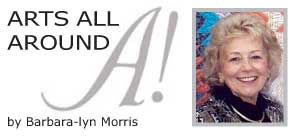

Abingdon architect Peyton Boyd was the first to tell me about a new museum, the Virginia Center for Architecture in Richmond. Opened to the public in 2005, VCA is one of few architectural museums in the country and the only one in the Southeast. The center is steadily becoming a destination for visitors to the state capital, and educators are finding the center appealing for school groups in terms of tying architecture to history, math, science, and art.
Rhea George, communications director for VCA, said visiting the center is a natural for students: "Kids innately like to build things. This magnificent structure with its battlements, leaded windows, old brick work, and courtyards invites the imagination to wander to the Tudor days of kings and queens."
VCA is housed in a 27,000-sq.-ft. Tudor-Revival, 63-room home built between 1916 and 1919 for Richmond financier John Kerr Branch. Inspired by English country houses, specifically the 400-year-old Compton Wynyates manor in Warwickshire, architect John Russell Pope (1873-1937) designed the mansion to house the Branch collection of Italian Renaissance antiques and tapestries. Since its construction years, the structure has been a popular landmark on Richmond's prestigious Monument Avenue.
When Branch selected Pope (1873-1937), he was known for his classical designs popular in Newport, Rhode Island, and for his award-winning classical design for Richmond's Union Station (now the Science Museum of Virginia). A reaction against the apparently undisciplined, excessive, and free-wheeling Victorian-age architecture, the classical manner called for more academic, disciplined designs inspired by the glory of imperial Rome. The return to classical grandeur also avoided what client Stuart Duncan called "the uncomfortable cachet of newness," evident in the modern architecture of the early twentieth century. Pope's career came to its fullest fruition with his classical designs for the National Gallery of Art, the National Archives, and the Thomas Jefferson Memorial in Washington, D.C.
Boyd is a VCA board member and the guest curator of a traveling exhibit, "Staying Power: Livable Communities for Virginia." According to Boyd, the exhibit began around this question: "What makes some communities seem like better places to live than others?" Boyd responded by illustrating ten principles established by the American Institute of Architects (AIA) as fundamental to creating livable communities. All his illustrations are in Virginia, from Cape Charles on the Eastern Shore to the Virginia Creeper Trail in Abingdon. A photo from Bristol's Rhythm & Roots Reunion is included under the AIA principle calling for preservation of downtown/urban centers.
The tenth principle that makes a community livable advocates for good design in all we build because, in the words of VCA curator Vernon Mays, "when design works, it is a thing of joy." Design is the "creative act...that ties all (the principles) together." To determine what the public recognizes and appreciates as good design, the AIA undertook a polling project labeled "America's Favorite Architecture."
The project marked the 150th anniversary in 2007 of the American Institute of Architects. A Harris Interactive poll was conducted of the public and AIA members to determine America's favorite buildings, bridges, monuments, and memorials. The results comprise a traveling exhibit of images of the top 150 structures. I saw the exhibit at VCA and was fascinated with what the organizers describe as the "buildings and designs that symbolize innovation and the spirit of (our) country and community. Perhaps more important, (respondents) choose structures that hold a place in their hearts and minds."
New York City boasts the greatest number at more than 30 on the list and the Number One structure, the Empire State Building (Is this a case of liking what we know, even if from King Kong movies). Washington, D.C. comes in second with 17 structures, including Pope's Thomas Jefferson Memorial (#4). The Vanderbilt residence, Biltmore Estate in Asheville, N.C., is in the top ten and the only entry within a two-hour drive of Bristol. Virginia has two entries: Monticello (#27), Jefferson's home in Charlottesville, and the Virginia State Capitol (#50).
The Capitol was closed for nearly two years to undergo what amounted to a $150 million renovation and expansion. Completed last spring just in time for Queen Elizabeth's visit, the 80,000-sq.-ft. expansion includes an underground visitor's center and expanded work space for the General Assembly. It has received praise for its efficiency and respect for Jefferson's original design.
An AIA website (www.favoritearchitecture.org) invites visitors to view all the structures, vote for favorites, add to the list, and to engage in discussion. While I was excited to see some favorite structures, such as numerous art and performance venues and contemporary innovations such as the Denver International Airport, I was disappointed that one of my favorite historical sites, Mt. Vernon, Washington's beloved home, was not on the list. Check out the list and add your voice to "America's Favorite Architecture."
The focus of the VCA is on architectural exhibitions that illustrate the goal of building to enhance livability; educational programs and publications: and an architectural book and eclectic gift shop that is reason enough to visit time and again. The current exhibit, "Southern Architecture/Southern Architects," reveals the "southern charm" of modern architecture in the South, from Fayetteville, North Carolina to San Antonio, Texas.
If You Go: VCA is located at 2501 Monument Avenue, Richmond. Call 804-644-3041 to reserve a tour of this historic landmark home. Museum hours: Tuesday-Friday 10 a.m.-5 p.m.; Saturday and Sunday 1-5 p.m.